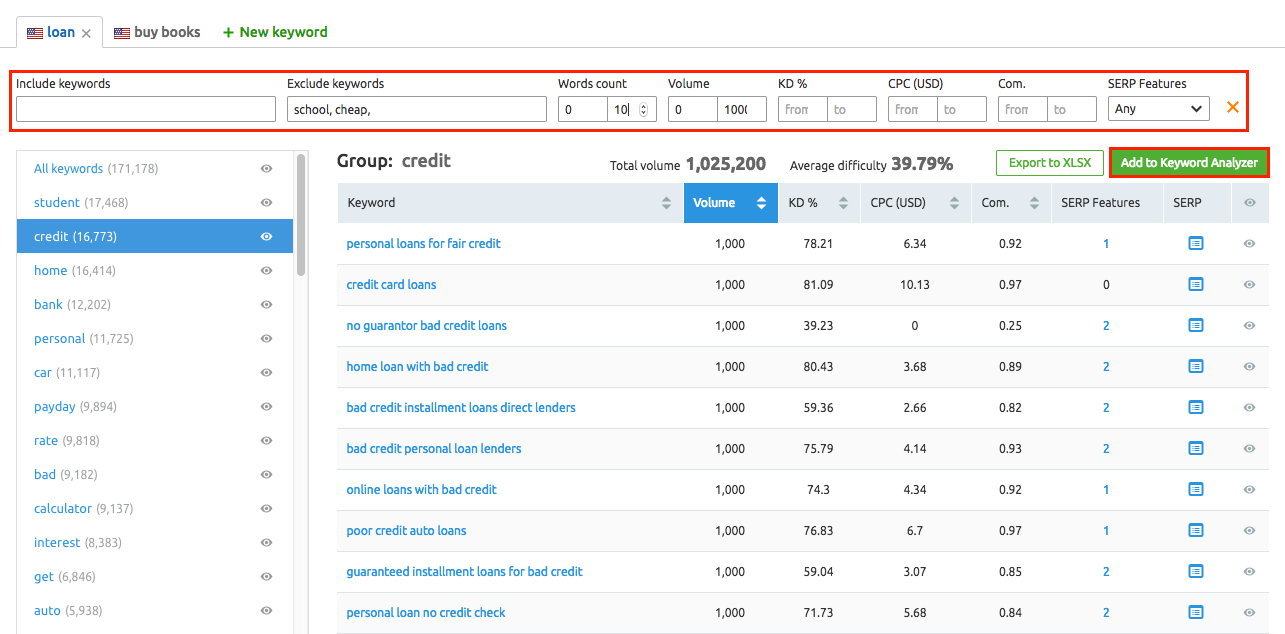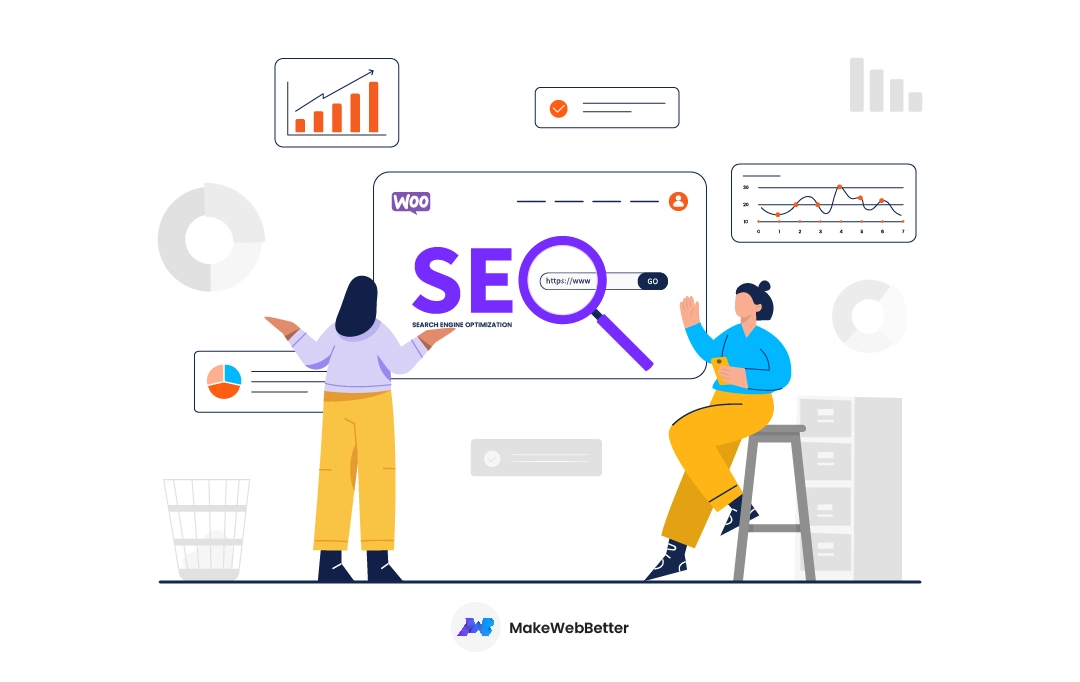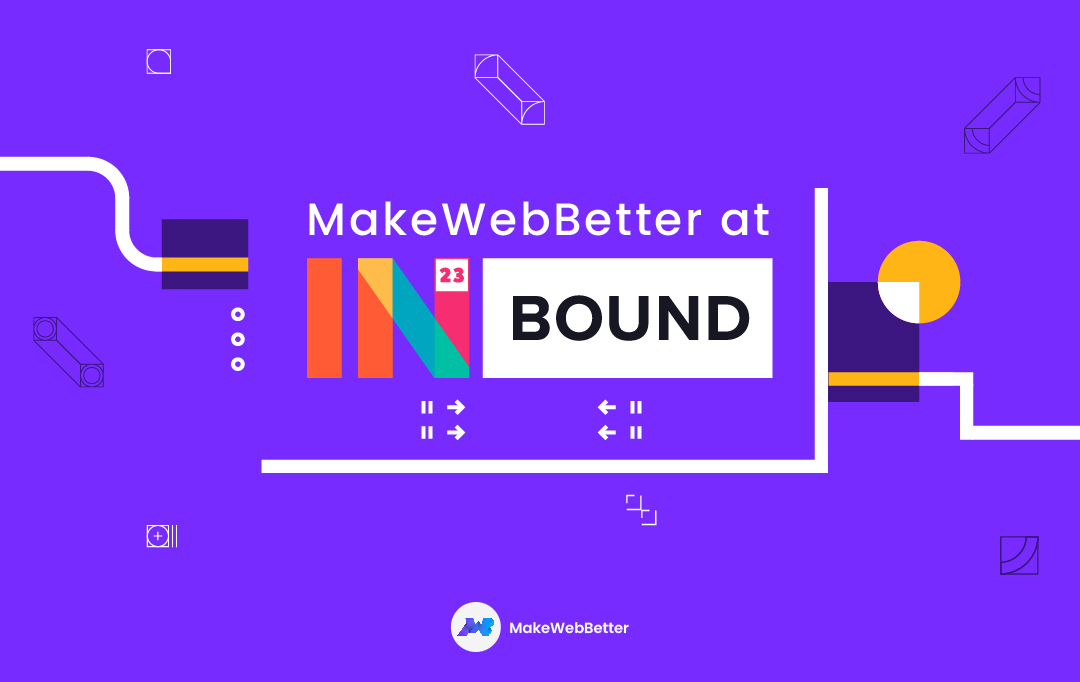Wondering why you must consider SEO in inbound marketing?
SEO or Search Engine Optimization is, undoubtedly, the crucial element for any digital marketing strategy. It is an easy approach to attract free and organic traffic from search engines for the companies and brands without paying hefty amounts on paid ads to lure in leads.
This remarks the importance of SEO in inbound marketing too. Therefore, in this article, we will be coming across certain roles of SEO in inbound marketing that can greatly impact your business’s overall success.
Table of Content
What is SEO in Inbound Marketing?
SEO in inbound marketing or Inbound SEO is the extension to your basic inbound marketing strategies.
We all know that inbound marketing strategies have changed business across the globe with lasting effects. It has helped businesses in attracting relevant traffic to their websites.
Integrating eCommerce inbound marketing with the right SEO techniques will further help you in attracting high-quality leads by ranking your pages, website, products/services, etc. on their related most-searched queries. These high-quality leads generated must be nurtured to convert them into your customers with the quality content that solves your customer’s pain points in multi aspects.
Moreover, implementing SEO in inbound marketing will also help you increase your customer base and ROI while reducing your CAC (Customer Acquisition Costs). All you need to ensure is that the SEO strategies should be properly infused with your inbound marketing strategies to improve your website’s search engine ranking and position.
Hire HubSpot Agency for Your Inbound Marketing Services!
Main Roles of SEO in Inbound Marketing
SEO in inbound marketing has given a high return on investment and hence opted for better use of resources. It is a well-known fact that SEO is a technical thing, and without knowledge and experience, things can go in a negative direction.
Since Google modifies its algorithm time-to-time to analyze the web pages, using other basic tools to increase the efficiency of the SEO techniques can be handy. Businesses tend to make mistakes while playing with SEO with limited resources.
Therefore, it’s imperative to use the best SEO in inbound marketing practices to attract the attention of potential customers. SEO inbound marketing establishes your business in the minds of potential customers.
70% of marketers see SEO as more effective than PPC. (Impactplus.com)
Here are some basic parameters that can drastically help you in inbound marketing SEO games.
Important Roles of SEO in Inbound Marketing
1. Find Keywords That Will Work for You
2. Create SEO-oriented Content
3. Let Your Images Define Your Content with Alt-text
4. Title, Headings Are Not Only a Parameter in SEO
5. Play with Your Meta Description
6. URL is Just Not a Website Address
7. Creating a Passage for Building Links
8. SEO Algorithm Updates
1. Find Keywords That Will Work for You
An effective SEO inbound marketing strategy includes a detailed study of keywords and phrases that are most used while searching on the internet. High-rank keywords are two-sided swords. The key is to find effective ways to use keywords that have high volume but low difficulties. Ask a few questions to yourself while deciding on the keywords that will be most useful, such as:
- What is the main topic and subtopic you want to cover under the content? The main idea of the content should be very clear in the minds of the seller or content creator. Any small doubt can be fatal for overall website ranking.
- Decide the number of keywords you will use on a single page and multiple pages. Neither too much nor too little keyword usage is recommended. One of the worst practices you should avoid is keyword stuffing.
- What type of search term do visitors usually look for while searching? Are the readers searching for the keywords you used in your content? Sometimes keywords that are suggested by search engines have a nearby meaning to the focus keywords. Hence, you should prepare a list of such keywords also.
- Where will the keywords fall in the customer lifecycle stage( awareness, consideration, decision)? It is very crucial to understand the lifecycle stage of customers or readers. For example, if a reader wants to know some features about a product but you are directly pitching the sales offer, it is sure that he will get annoyed and will bounce from your page. So, deciding the content based on the search queries is a good practice.

Source: Semrush
You can check the traffic-generating potential of keywords through Ahref, Semrush, etc. If the traffic distribution of the keywords is even then the keyword is recommended for the content in the long run.

Source: Ahref
2. Create SEO-oriented Content
If your page provides useful insights or solves any pain point, then the chances of getting a good rank and higher position on the search engines are much better. Search engines have specific algorithms that catch duplicity and plagiarism. Therefore, try not to copy or spin any content to avoid any flags.
Content Formation + Keywords = Perfect SEO
The content should be written keeping the target audience in mind, and for earning their trust, you should stick to the niche. Fresh and updated content will create a long-lasting impression on the readers. Connecting content helps create a brand image of your business in the customers’ minds.
The most effective way to improve SEO is to use longtail keywords(approx 3-5words) with high search volume but low competition in the content. Secondly, you should never use too many keywords. Ensure that you never stuff the page with focus or secondary keywords.
3. Let Your Images Define Your Content with Alt-text
Alt-text is a short form of text that describes an image for those who cannot see or access the image because of some reason. The best practice for alt text for images is to use specific terms or lines to describe the image. Some of the uses of Alt text are:
- Alt text in the improvement of SEO: Google keeps alt text as an important factor for ranking purposes. Crawlers of Search engines use alt text to index images in a proper way.
- To enhance accessibility: Alt text is used by screen readers to read the image for the visually impaired. But for eCommerce websites, it is seen that screen readers usually fail to meet the accessibility criteria. Criteria such as the use of HTML “alt” tags in the images and graphics can help assistive technologies. Don’t use embedding text because it cannot be read by screen readers and is not fit for mobile devices.
- Context: If the pages are loading slowly, then the alt text acts as an alternative to provide what is there in the content.
Example for Alt-Text:
<img src="Image1.jpg" alt="Sample Image" width="500" height="600">
4. Title, Headings Are Not Only a Parameter in SEO
The title is the first thing that attracts the reader and viewers. It is the representing tag that appears in multiple places across the internet. Titles are identified by both search engines and web users.
The title tag in HTML is written as:
<title>How to get the best title for my website</title>
Titles are shown in SERPs like:

Hence, it is recommended that the title should be catchy and must have keywords. The ideal character limit is 50-70 because Google flashes in the SERPs.
Search engines use headings to index the structure of your web pages. Users usually skim a page by their headings. So, it becomes necessary to use headings to show content structure.
<h1> in the HTML code should be used for the most relevant heading or topic followed by <h2> and <h3> to <h6> respectively. Subheadings can include modifier words such as best, find, review, etc.
Headings should depict the content written under them in the most connected way. The heading is often confused with the title. Many experts believe that the ideal number of words for the heading should be 6-8. Moreover, you also need to split the headings into different sections, each with a corresponding subheading.
5. Play with Your Meta Description
The meta description of webpages is visible on the search engine result pages, so optimizing them should be on the priority list. Meta descriptions that appear on SERPs are a part of a larger snippet and include
- Slug: The URL that defines the particular page on the website.
- Title tag: The title can be different from the headline that appears on the web page.
Google usually snippets the description of around 150-160 characters. Hence the description should be near these numbers, which will give your pages a better exposure to the SERPs.

6. URL is Just Not a Website Address
Uniform Resource Locator or URL is a simple address allocated to specific resources on the website. A proper URL that is understandable and connected with the web page’s content is very useful in the SEO process. If you are selling something over your website, it should have an optimized URL.
For example, if you are selling Adidas shoes and your web page URL looks like www.mywebstore.com/product9899gfds, then you should optimize it with a URL like www.mywebstore.com/adidas-shoes. The ideal character limit for an optimized URL is around 125 characters.
There are various factors that you should consider to create an SEO-friendly URL, keep the URL short, easy to read, and should include keywords, avoid special characters, etc. Moreover, follow a well-structured URL pattern and HTTPS protocols to make your URL more secure.
For example,
![]()
The above image shows the ideal way of creating URLs for your web pages.
7. Creating a Passage for Building Links
Google considers various factors before ranking web pages. One of the parameters is the time spent on the page and the whole website. The more relevant and quality content you have the higher time spent by the visitors will be there.
Whenever you are looking to broaden your reader base, interlinking of topics proves to be a very effective approach. Link building is a scalable strategy that helps in creating links that will take readers to a specific page.
Links that are obtained from trustworthy websites are more authentic to be used. In addition, Pay attention to details such as the link’s text and the type of relationship the link creates with your website (follow or unfollow). Dofollow links help in search engine ranking but no-follow links do not.
Nofollow HTML Code:
<a rel="nofollow" href="https://www.makewebbetter.com/">HubSpot Agency</a>
In addition, when you are looking for internal linking, remember a few things such as-
- Choose the most relevant link that supports your content
- Use natural anchor text that can encourage visitors to click on the link.
- As a rule of thumb, avoid using general anchor text such as Read More, click here, etc.
8. SEO Algorithm Updates
Most SEO inbound marketing experts estimate that Google usually changes the algorithm 500-600 times- searchengineland. Most of the updates or changes are not very significant, but few have a crucial impact on SEO. Furthermore, the updates bring a better experience in page loading, stable pages, useful content, etc. So, if you are looking to encash SEO inbound marketing techniques, you should be well aware of recent updates. For example, in December, an algorithm that deals with Product Reviews were rolled out by Google that will cover online making sellers change product content on their webstore.
Attract and Convert Hot Leads with Strategic SEO in Inbound Marketing
Strategic SEO can create wonders in the field of Inbound marketing. The growth in organic traffic using SEO is not a straightforward process. Therefore strategic SEO can design a marketing approach based on customer interest and spending behavior. So, if you want your business to reach its maximum potential, inbound marketing is not a thing to be missed out on. The benefit of inbound marketing SEO isn’t to force someone to buy your product; in fact, they will find your services naturally if you have done the SEO properly. Here are some of the checklists to devise effective SEO in inbound marketing.
1. Understand your Website and Analyze your Competitors
Your website may rank on top today, but nothing lasts forever. The ultimate goal is to build your brand reputation, and for this, you need to represent your brand as trustworthy. Show your achievements and a brief plan of your company’s growth. Moreover, the use of infographics and customer feedback and reviews act as a cherry on top. This happens because the competitors are always looking to optimize their website and content to outrank your website. SEO keywords research and data-driven marketing techniques will help you understand your competitor’s inbound marketing SEO practices.

Source: Semrush
2. Extensive Market Research
Digging deep into the market research gives a broader view of trends and landscape. It would be best if you always kept in mind that the content should be different and suitable for readers, and for that, you have to think out of the box sometimes. To understand customer behavior and perception, valuable insights can be obtained through websites like semrush, Ahref, etc. The insights can point out the area of opportunities you can work upon.
3. Know your Target Audience
The ultimate goal of SEO and other marketing techniques is to provide a solution or content that solves the pain point of the readers or customers. Some methods to collect intel are conducting surveys, and client interviews, identifying industry trends, creating personas and using Google Analytics. A properly targeted audience analysis will help you design dedicated marketing strategies that can save money to a great extent.
Gather competitors’, industry, customer, and customer observations on various products and services over the internet. Compile these data and make a profitable strategy to increase your exposure on different platforms.
4. Identify the Search Terms That are Currently in Use
To identify the best search terms, prepare a questionnaire to counter normal searching results that show a broad range of irrelevant keywords. To identify the most used and relevant search terms, you can either use keyword research websites like Semrush and Ahref or do a self-research through Ubersuggest, Google analytics, etc. Pertinent words and phrases can bring organic traffic to your website. In addition, you can prepare a separate list of referring keywords that will indirectly link your website when people search for them on Google and other search engines.
5. Track Results and Optimize
Inbound marketing is a great way to grow and expand your business but learning it takes time and effort. One of the ways to get services from any agency or another is to do it by yourself. Since certified agencies are well equipped with tools and have team experts, the results obtained can be phenomenal. The best way to improve efficiency is to track the results and focus on the strategies and formats that produce the best outcome.
a) Traffic Received from Organic Search
Organic traffic is received from the appearance of your website that is displayed on search engines. Any free traffic that contributes to overall website traffic is organic. Keep track of organic traffic through Google Analytics, and Semrush. You can get help from inbound marketing SEO service providers to assess the links and provide traffic insights.
b) Click-through Rates from the Total Impressions
It is seen that the higher the click-through rate, the better the performance of your page. Click-through rates determine how many people are finding your content relevant. The CTR(Click-through rate) is used to gauge how well your ads or keywords are working. A CTR of 2% is considered above average.
c) The Conversion Rate of the Visitors
Visitors-to-customer conversion rate is a metric that shows the proportion of visitors to your website that are converted into paying customers in a given period span. Therefore, conversion rate helps you reduce customer acquisition costs and improve overall marketing effectiveness.
Summing Up!
Inbound marketing is one of the prominent ways to reach customers. SEO in inbound marketing is inevitable because it uses and provides content that establishes a connecting relationship between customers and sellers. Thus, implement a non-robotic approach to reach the customers.
By implementing the above tactics and techniques, you can dominate SEO. In addition, it will improve overall content and will help crawl bots.
With many players in the market, it is always hard to choose the best service provider. MakeWebBetter gives you a crystal view of how you can manage your SEO in inbound marketing and improve your business presence in the best possible way.









SEO is essential for organic online growth and if you do it right, you’ll have an incredible number of internet users find your website quickly. This raises brand awareness and the likelihood that these users will become clients. SEO is an important marketing strategy.
I completely agree with you, Emily. SEO is critical and implementing it in combination with Inbound Marketing is the need of the hour for any website running.
Hello, Great Article!
Thanks Ramya! 🙂